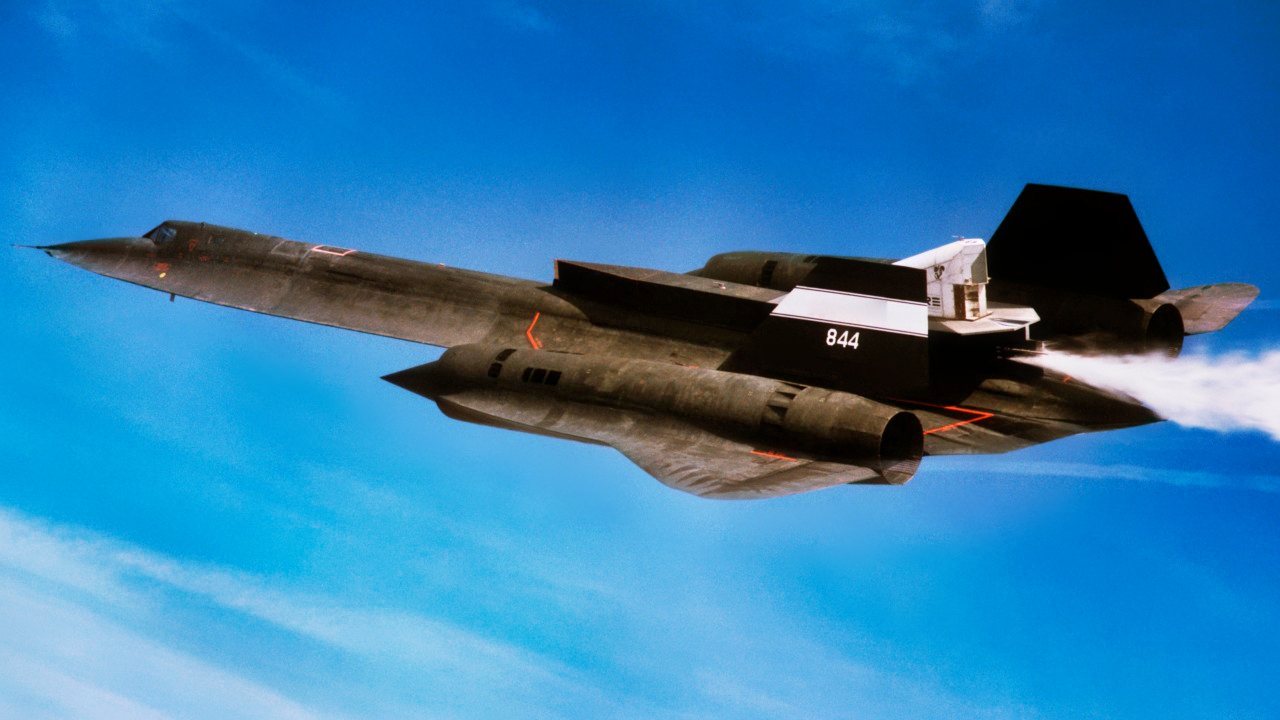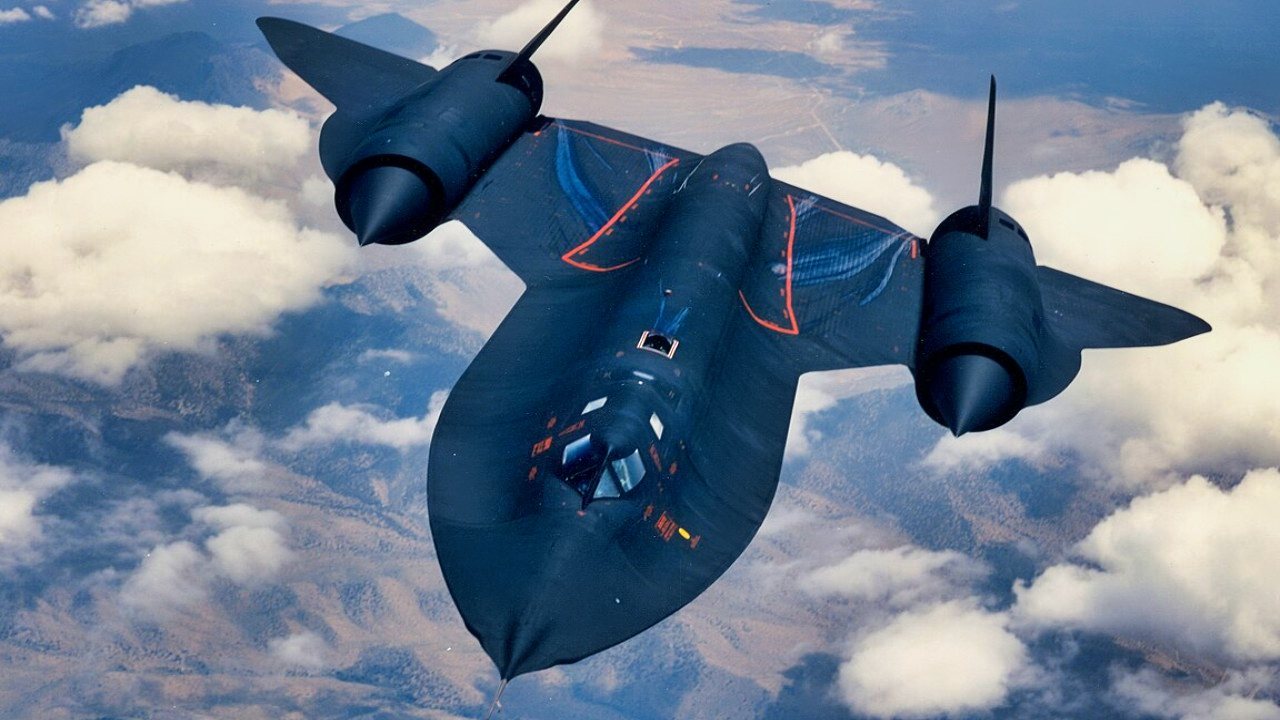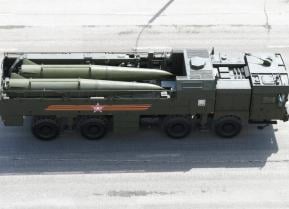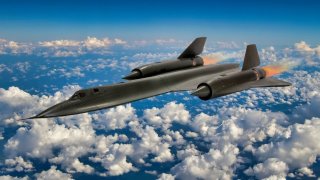SR-71 Blackbird: Could It Outrun Russia's S-400 Air Defense Missiles?
The SR-71 earned its reputation for incomparable speed. No aircraft could catch it, and neither could missiles. Could Russia's new S-400 air defenses take out the Blackbird?
Summary: This article considers the capabilities of modern air-defense systems like the Russian S-200, S-300, and S-400, suggesting that while these systems could potentially target the SR-71 at its historical speed and altitude, an upgraded SR-71 with advanced jamming technology would likely remain immune to their missile threats.
Could the SR-71 Outrun the Russian S-400 Triumf?
During the Lockheed SR-71 "Blackbirds" nearly 25 years in service, the high-speed aircraft set numerous speed records, and on July 28, 1976, a Blackbird reached an impressive 2,193.167 miles per hour. Flying at roughly 36.55 miles per minute, or 3,216.4 feet per second, it was faster than a bullet fired from the World War II-era M1 Garand rifle, which had a muzzle velocity of 2,800 feet per second.
Moreover, the aircraft still holds the record for a cross-country flight, traveling from Los Angeles to Washington, D.C. in just 64 minutes, 20 seconds.
The SR-71 achieved a record top speed of 2,193 mph – and while other aircraft could reach such extreme speeds in theory – but would melt due to the atmospheric friction and heat – the Blackbird could maintain it for extended periods. It was able to cruise along at more than 2,200 mph (Mach 3+ or more than three times the speed of sound), and at altitudes greater than 85,000 feet.
In addition to flying fast, the SR-71 also set an altitude record – reaching 25,929 meters. It flew so high that pilots navigating by sight couldn't even rely on ground features such as roads and instead needed to look at the mountains, rivers, and major coastlines to get their bearings.
SR-71: It Could Outrun Missile
The SR-71 earned its reputation for incomparable speed. No aircraft could catch it, and neither could missiles.
As previously reported, while a dozen Blackbirds were lost to accidents during its service history, not a single aircraft was shot down by an enemy. Though the aircraft carried radar countermeasures to evade interception efforts, the Blackbird's great protection was still its combination of very high speed and high altitude. It also had a low radar cross-section, which gave a very short time for an enemy surface-to-air missile (SAM) to acquire and track the aircraft.
By the time a SAM site could track the Blackbird, it was out of range. In theory that made it almost invulnerable. Moreover, if a SAM site was able to track the SR-71 and fire a missile, the aircraft flew high enough to evade it. Yet, those on the ground still tried their best, and during its service history, the SR-71 reportedly evaded some 4,000 missiles fired its way.
Some 800 missiles were fired at Blackbirds over Vietnam alonebut not a single one was lost to enemy fire. One came close, and a CIA A-12 did take a piece of shrapnel from an SA-2 missile that exploded 100 meters away. In addition, SR-71 pilots did report that missiles launched without radar guidance and no launch detection had passed as close as 150 yards (140 m) from the aircraft.
So What About the S-400 Triumf?
Though the SR-71 has been retired, at least a few experts believe the high-speed aircraft would still be able to get the job done even against the best air-defense systems in service today.
The AviationGeekClub.com recently quoted Damien Leimbach, former United States Air Force Avionics Technician on U-2 aircraft, who said via a post on Quora that "The S-200, S-300 and S-400 are amazing platforms, and given their stated performance, the 300 and 400 could probably hit a target at the SR-71's speed and altitude. But that is not the same as hitting an SR-71."
Leimbach explained that while the Russian-made air-defense systems "could" shoot down the version of the SR-71 that existed in the 1970s or 1980s, it likely couldn't come close to hitting an upgraded SR-71.
The SR-71 was designed as a long-range, high-altitude, strategic reconnaissance aircraft. Its mission equipment for the plane's aerial reconnaissance role included signals intelligence sensors, side-looking airborne radar, and a camera. If the aircraft were in service today it would also have the latest jamming technology.
"It would have received the same jamming and Electronic Warfare upgrades as other planes have," noted Leimbach, who further suggested, "Would these EW jammer upgrades make the plane immune from those missiles? Yes it would."

Leimbach said he spent 6 years, recently, working on the sibling of the SR-71, the U-2 and as an electronics specialist he claimed to have been directly responsible for installing and maintaining the AN-ALQ 221 jammer that made the high flying, but slow moving, U-2 Dragon Lady immune to those missiles."
"The U-2 and the SR-71 don't just take pictures. They listen to cell phones. They monitor radios. And they also listen to, record and analyze the frequencies, pulse rates, variable modes and power outputs of enemy SAM systems like the S-200, 300 and 400," Leimbach noted.

The electronics specialist also noted that the S-300 is Russian technology from the 1970s, which made it about as sophisticated as American tech from the 1950s, while the S-400 is just an upgraded version. Both are very good, but the U.S. has had a lot of time to develop countermeasures.
To his point, "If (Russia's) modern weapons can't even take down the U-2, they could not shoot down the SR-71."
Author Experience and Expertise: Peter Suciu
Peter Suciu is a Michigan-based writer. He has contributed to more than four dozen magazines, newspapers, and websites with over 3,200 published pieces over a twenty-year career in journalism. He regularly writes about military hardware, firearms history, cybersecurity, politics, and international affairs. Peter is also a Contributing Writer for Forbes and Clearance Jobs. You can follow him on Twitter: @PeterSuciu.


